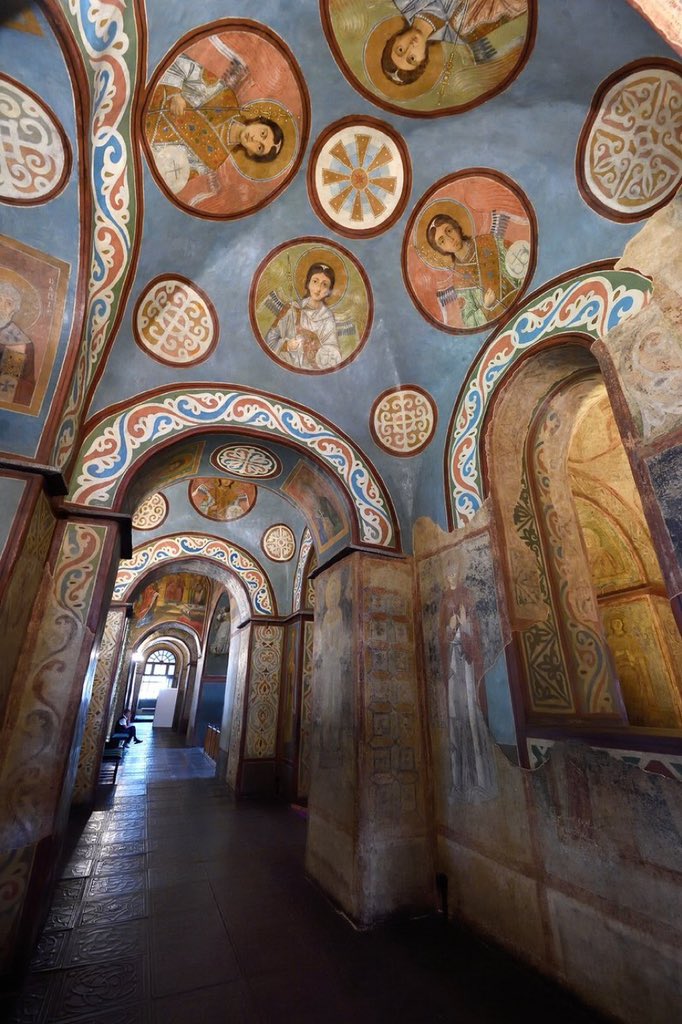Sofia Korol’ (National Academy of Sciences of Ukraine)
“To the History of the Interwar Church Decorations in Galicia: Kyivan Rus’ Images and Motifs”
Dr. Sofia Korol’ graduated from the department of theory and history of art of the Lviv Academy of Arts, Ukraine (1996). She completed her PhD in the history of art at the Ethnology Institute, National Academy of Sciences of Ukraine, Lviv (2007). Since 2016 she has been heading the Department of Art History of the Ethnology Institute (National Academy of Sciences of Ukraine, Lviv). Her scientific interests cover the history of Romanticism and Modernism in Ukrainian art as well as the history of ecclesiastical decoration in the churches of the west of Ukraine before and between two World Wars.
In this paper, Korol’ presents how Ukrainian sacred art of the early twentieth century was aimed at finding a new expression that corresponded to the spirit of the era. Despite the fact that this art is still insufficiently researched and not fully integrated into the history, it can boast outstanding results. One of the significant ways to develop this art was to rethink the traditions and experiences of the past. Thus, arose excellent examples of neo-Byzantine iconography and monumental painting by P. Kholodny (1876 – 1930), M. Osinchuk (1890 – 1969) and P. Kovzhun (1896 – 1939). The ideological basis of their art was the appeal to the great times – the founding of the medieval Ukrainian state and the formation of Christianity as the state religion. As for artistic pursuits, they sought to achieve a holistic expression and synthesis between the centuries-old iconographic traditions of Ukrainian sacred art and the latest achievements of European art of the early twentieth century.
Bibliography
Козак, Н. (2018). «Монументальне малярство ХІ – XVIII століть». У Церковне мистецтво України: у 3-х т., відпов. ред. Степан Павлюк; наук. ред. тому Людмила Герус, 701–744. Харків: Фоліо. (In Ukrainian).
Грималюк, Р. (2018). Монументальне малярство другої половини ХІХ – початку ХХ століття. Церковне мистецтво України: у 3-х т., відпов. ред. Степан Павлюк; наук. ред. тому Людмила Герус, 663–686. Харків: Фоліо. (In Ukrainian).
Нікітенко, Н. (2018). Мозаїки та фрески Софії Київської = Mosaics and Frescos of St. Sophia of Kyiv. Київ: Горобець. (In Ukrainian and English).
Гах, І. (2017). Епоха митрополита: українське образотворче мистецтво першої половини ХХ століття: Великому Митрополитові присвячується. Львів: Манускрипт-Львів. (In Ukrainian).
Сидор, О. (2012). “Каплиця Греко-католицької Духовної семінарії у Львові у творчості Петра Холодного-ст.”. У Патріарх Йосиф Сліпий і мистецтво. Київ–Рим: Релігійне товариство “Св. Софія” для українців католиків. (In Ukrainian).
Український Музей. (2001). Три покоління Холодних = Three Generations of Cholodny Artists. (2001). Нью-Йорк: Український музей. (In Ukrainian and English).
Попович, Володимир. (1989). Нео-візантиністи і псевдо-візантиністи в українському іконописному малярстві. Нотатки з мистецтва, 29, 11 – 25. (In Ukrainian).
Осінчук, М. (1967). Михайло Осінчук. Мистець-маляр. = Michael Osinchuk. Artist. [Каталог виставки]. Ню-Йорк. (In Ukrainian and English).
Холодний, П. (1931). Петро Іванович Холодний (1876 – 1930). [Каталог виставки]. Львів. (In Ukrainian).
***
PRESENTED ON 8 JUNE 2022
Part of a lecture and discussion series ‘From Kyivan Rus’ to Modern Ukraine: Virtual Conversations on History, Art, and Cultural Heritage’ co-organized in collaboration with Dumbarton Oaks and North of Byzantium.
